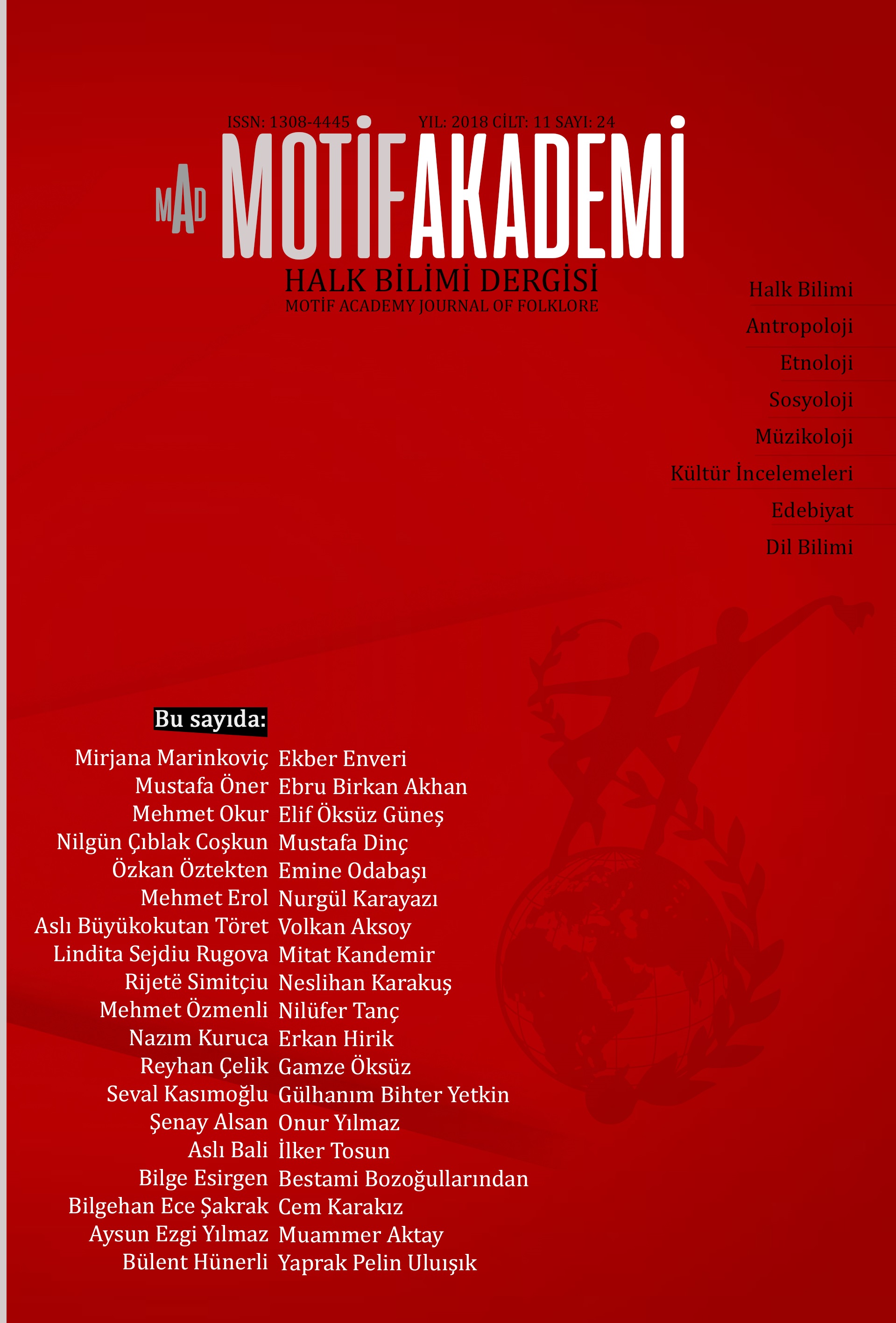KAHRAMANMARAŞ’TA GELENEKSEL YÖNTEMLERLE EDİK YAPIMI
EDİK MAKING WITH TRADITIONAL METHODS IN KAHRAMANMARAŞ
Author(s): Mitat Kandemir, Cem KarakızSubject(s): Cultural history, Evaluation research, History of Art
Published by: Motif Halk Oyunları Eğitim ve Öğretim Vakfı
Keywords: Kahramanmaraş; edik; sandal; shoes; leather;
Summary/Abstract: Leather and leather products have an important place in the Turkish handicrafts which have a history of hundreds of years. Reflecting rich examples of the Turkish culture; leather trade has survived since the first years of humanity until the present day. Leather which had been used for protecting from the nature conditions, covering and sheltering in ancient times has developed, differentiated and been used in many areas in the course of time. One of its most important utilization areas is shoes. Due to the organic structure of leather, it is not possible to encounter leather findings from ancient times. However, the shoes of a man in golden suits in the Esik castle of Kazakhstan are an important leather antique proving that shoes had been regarded. In the history of Turkish culture, shoe styles have diversified starting from the Central Asia and been called by various names. One of these names is “Edik”, formerly known as “Edük”. Made mainly of buffalo and cattle leather; edik is highly important in regard to its historical and cultural characteristics. It is known that edik is worn in different regions of Anatolia and around Kahramanmaraş. It is still manufactured in a few shoe workshops in Kahramanmaraş and commercialized at home and abroad. In this study; it is aimed to document the materials and production methods used in the manufacturing of edik, which has an important place in the area of leather handicrafts. Accordingly, an interview was conducted with Mehmet Kopar, a sandal master in the province of Kahramanmaraş and the stages of manufacturing were photographed and documented for the purpose of handing down the next generations.
Journal: Motif Akademi Halkbilimi Dergisi
- Issue Year: 11/2018
- Issue No: 24
- Page Range: 220-239
- Page Count: 19
- Language: Turkish

